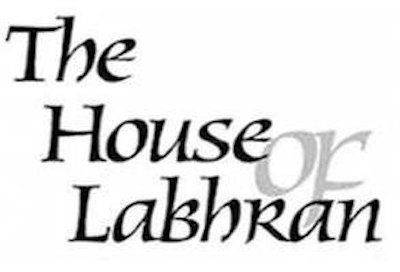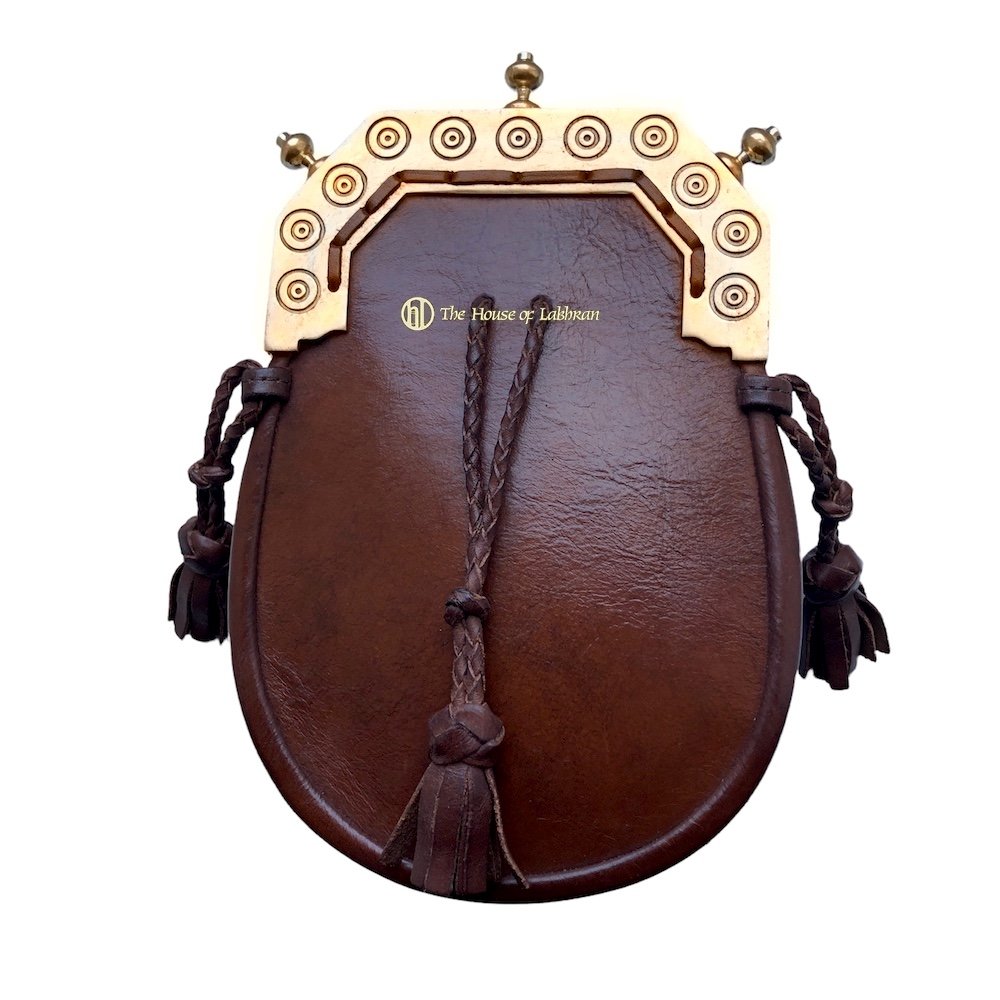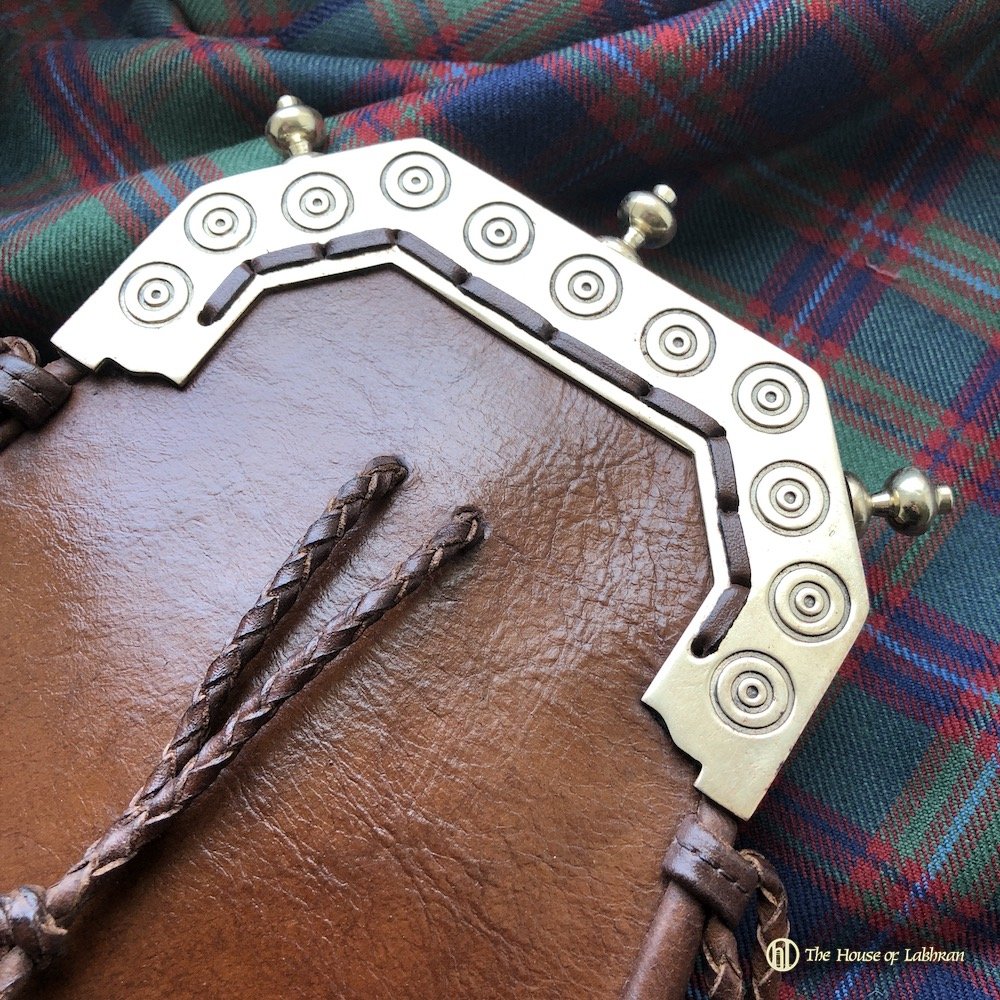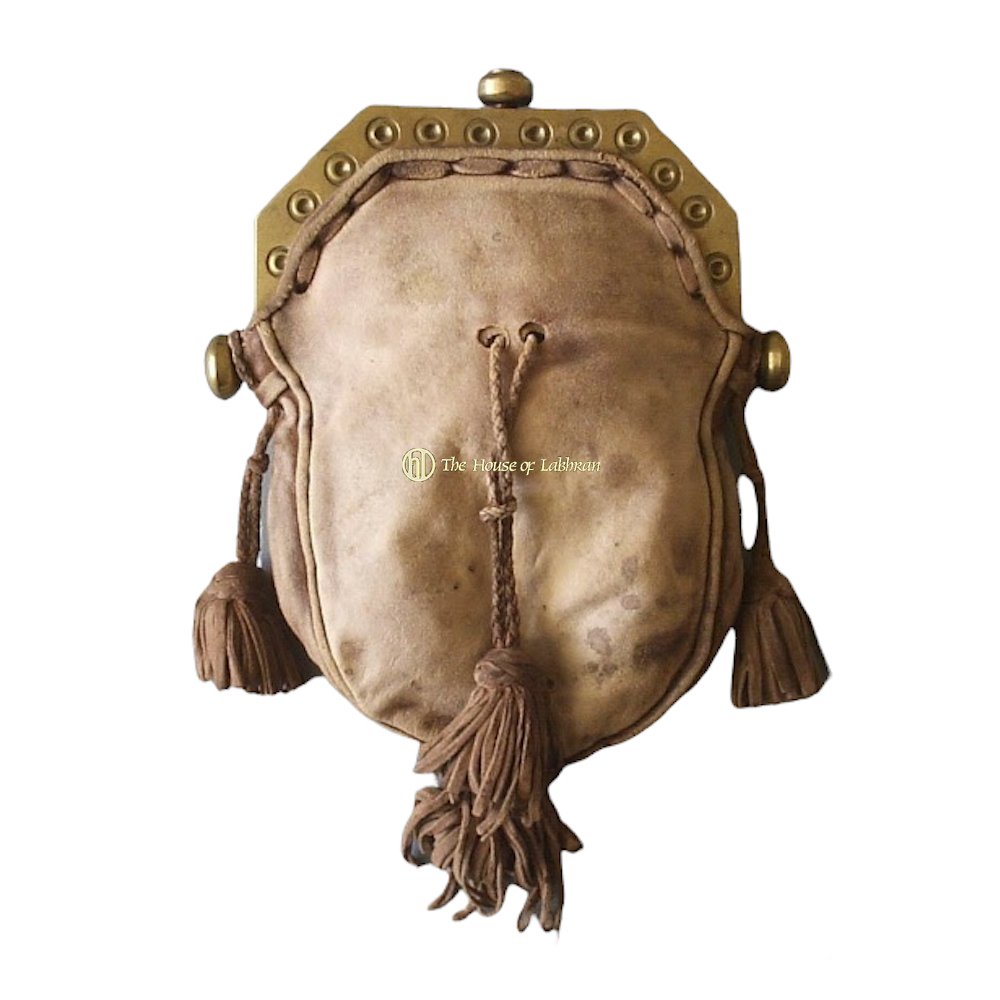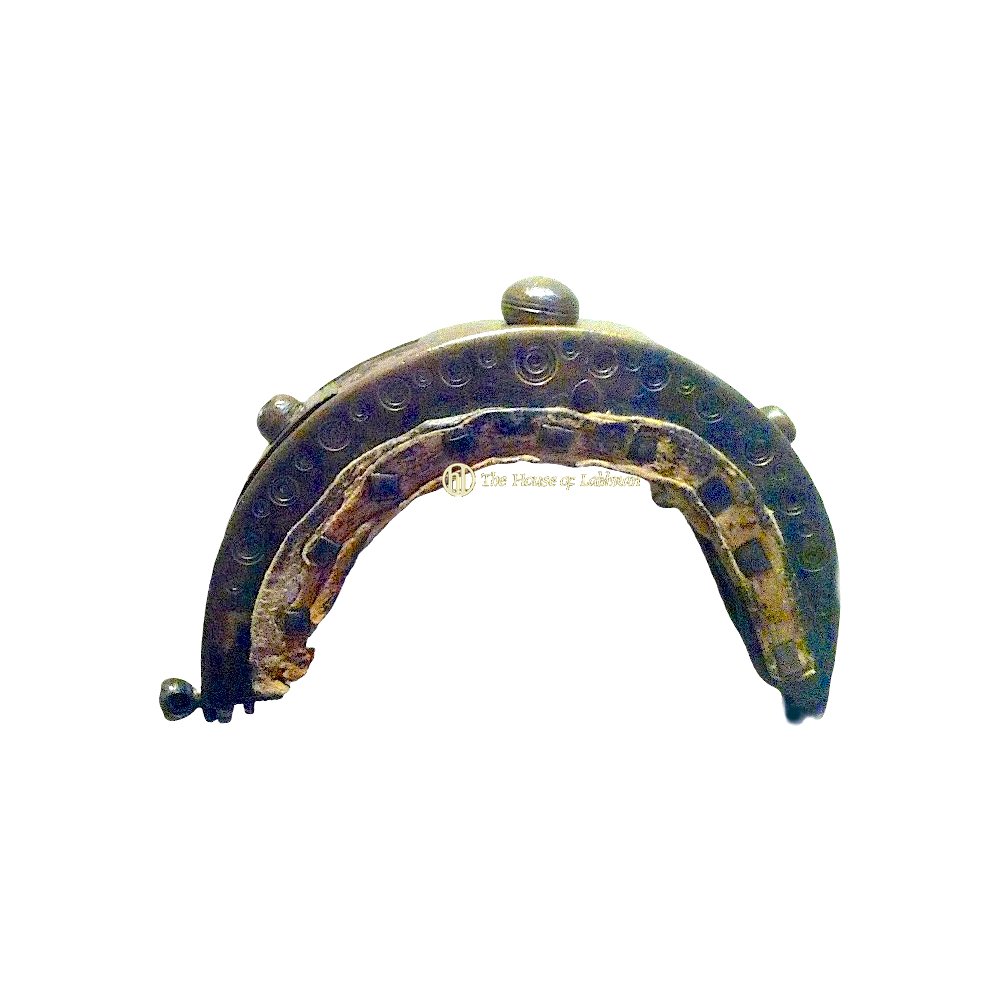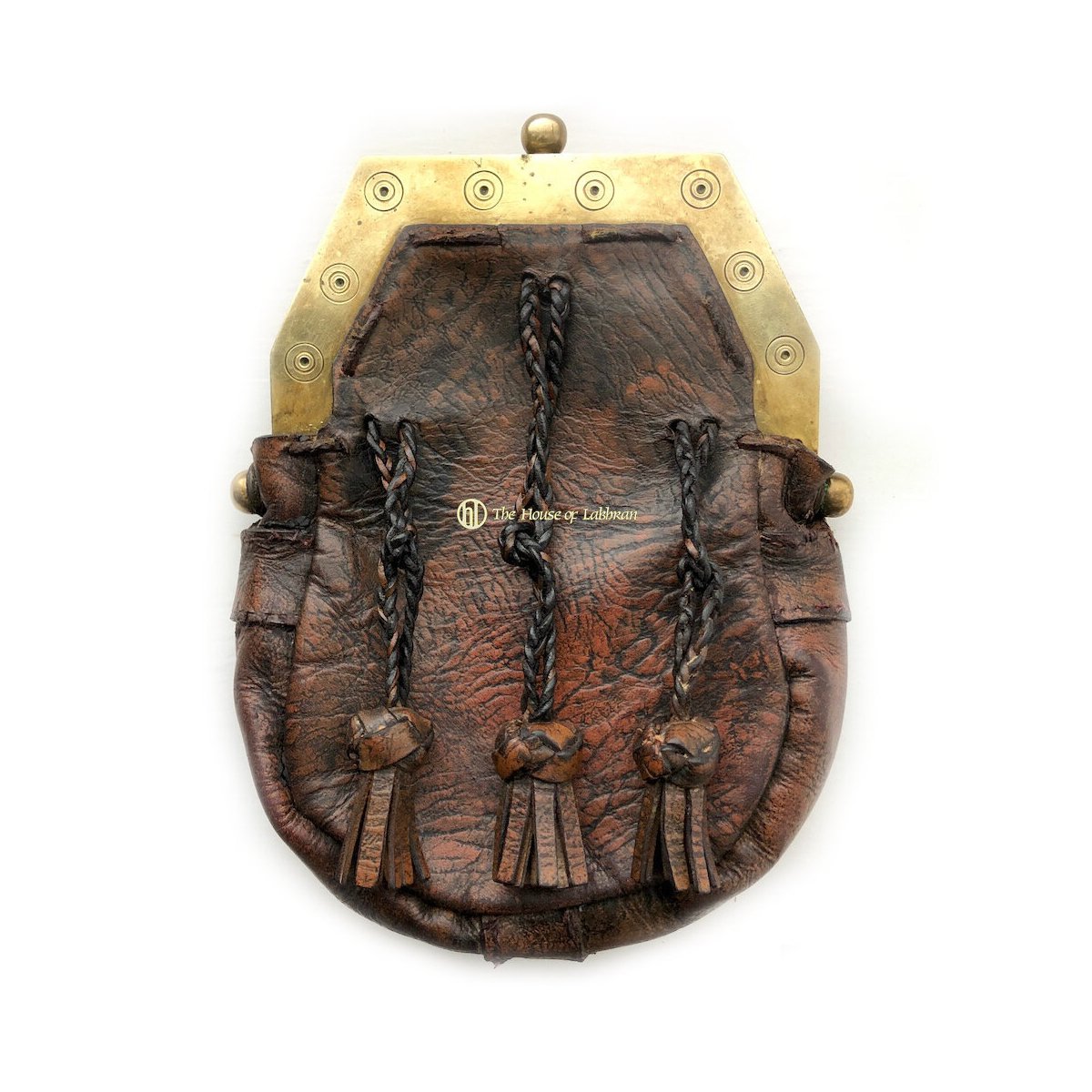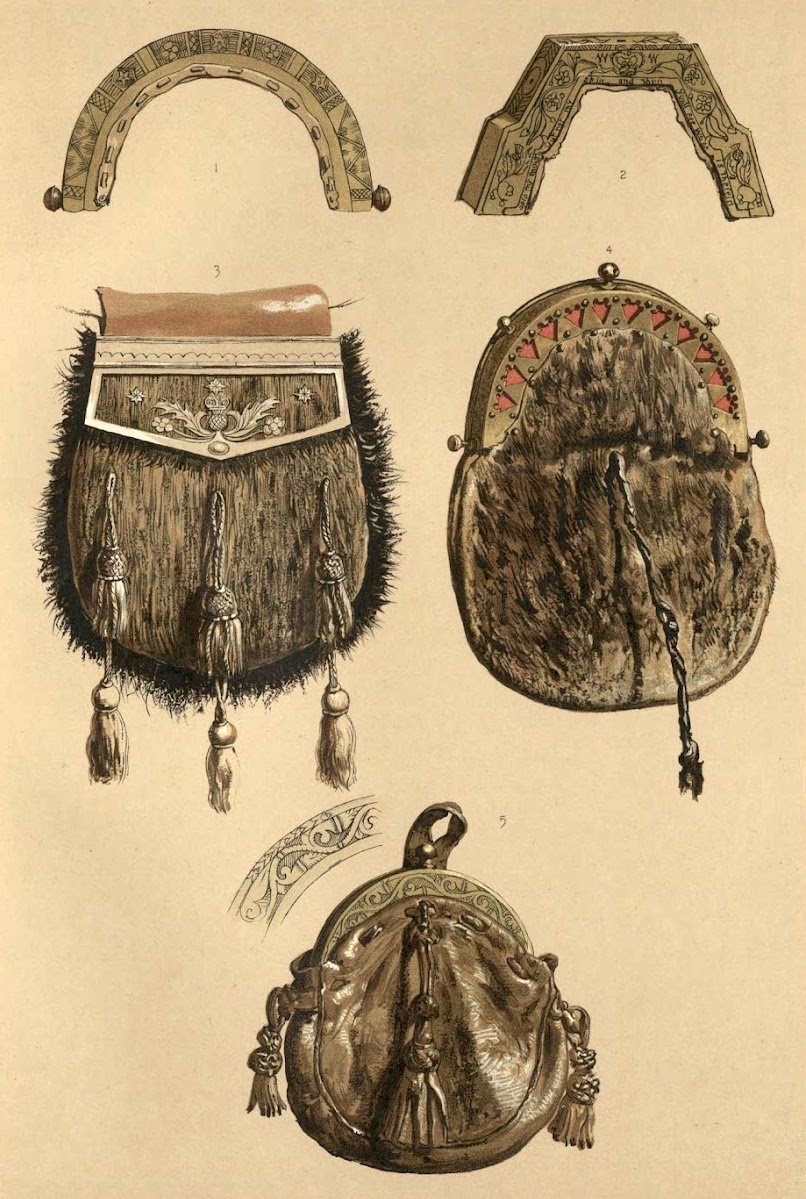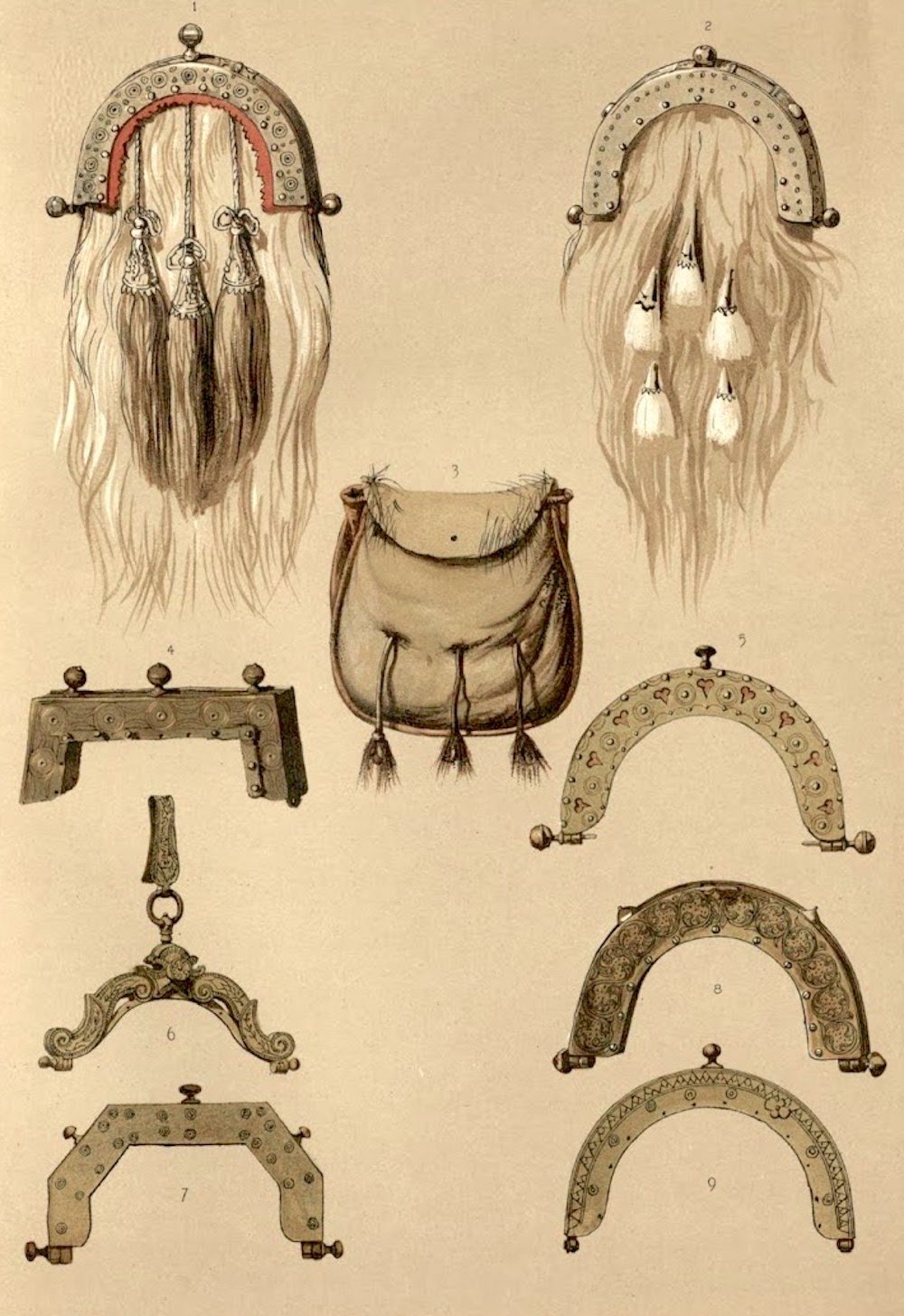Scottish 18th Century Style Brass Cantle Bullseye Sporran
Scottish 18th Century Style Brass Cantle Bullseye Sporran
One of the classic designs of sporrans from Scottish history has to be the geometric brass cantle with bullseye target design.
The target or bullseye pattern has been used since the Iron Age by the Caledonii and later by the Picts and Norse into the medieval period. The Pictish people left no surviving indigenous writings and even the name they used to describe themselves is unrecorded. They were first documented in history by the late by the Roman historians. So although there are a number of suggestions of the meaning of the design, the target designs true origin is lost in history.
By the late 16th century the main form of defence for Scottish Highlanders was the classic Scottish targe. There was an act of the Scottish Parliament in the mid 15th century which does mention of the “round leather target” ( eythir of ledder or of a firme borde wi twa bands on the bak). It may well be that the traditional design was used on the sporran cantles as a symbol of protection.
We will never know for sure.
Today these sporrans have become known as Jacobite sporrans, due to the link with the Jacobite Risings. However, the reality is these styles and sporrans were worn by people across Scotland - Jacobite or not.
We have hand crafted our 18th century style sporran in solid brass like the originals. It is inspired by antique and vintage pattern sporrans we have had in our collection over the years, but perfect for the Highland gentlemen, rebels and rogues of today.
The cantle is partly attached using a classic lacing technique to give that period look. The vintage style leathers for the classic pouch are hand aged in our studio to start building up look of age. This will then only improve further and build patina with use over the years.
For more details please visit the sporran department
Looking to the past for inspiration, but never living in it.
